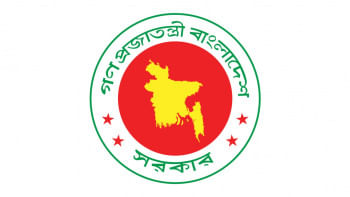Bumper sesame yield expected in Panchagarh

Farmers and agriculture officials in Panchagarh district are expecting a bumper yield of sesame this season.
The pollination was well due to favourable weather condition and the plants are still unaffected by pest attacks or natural calamities, said SM Ashraf Ali, deputy director of the Department of Agriculture Extension (DAE), Panchagarh.
Most of the plants have already passed the pod formation stage, he added.
The farmers in the district have cultivated sesame on 2,396 hectares of land this season against the DAE's target of 2,223 hectares with expectation to produce one tonne per hectare, officials said.
A good number of honey farmers set wooden hives alongside the oilseed fields, and it helped better pollination.
The farmers are showing interest to cultivate the crop on more areas of lands after getting its bumper yield and good prices in recent years, DAE officials said.
It requires lower production cost in terms of irrigation, fertiliser and labour compared to other Rabi crops, and less fertile lands, where other crops do not usually grow well, can be used for sesame cultivation, they said.
Usually farmers in the district grow local variety T-6 sesame.
Bari Til-3, Bari Til-4 and Bina Til are also being cultivated in some areas as the DAE authorities are campaigning for cultivating high yielding sesame varieties invented by Bari between the gaps of potato and aman.
Sesame requires 70-80 days for attaining maturity and mid-February to mid-April is the optimum period for its cultivation.
During this correspondent's recent visit to different areas of Panchagarh district, farmers said they would start harvesting the crop within a week.
Azahar Ali, 45, a farmer of Bhitargarh village in Panchagarh Sadar upazila, said he cultivated sesame on one bigha (0.3306 acre) of land last year spending Tk 700 and got four maunds (one maund = 37.32 kg) of yield.
"That time I made a profit of Tk 6,500. This season I cultivated sesame on two bighas of land," he said.
Cultivation of sesame, requiring moderate irrigation only once, is easier and less costly than other crops but brings good profit, said Shamsuzzoha, 55, a sharecropper of Sahapara village under Boda upazila.
"Sesame farming between the gap of potato and aman paddy cultivation periods helps earning additional money. It also helps to make the soil fertile," said Shamsuzzoha, who cultivated sesame on 1.5-bigha of land.


 For all latest news, follow The Daily Star's Google News channel.
For all latest news, follow The Daily Star's Google News channel. 



Comments